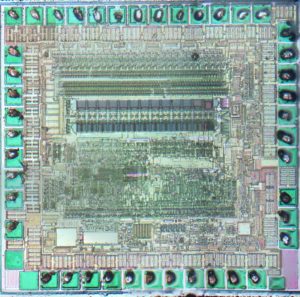Posts Tagged ‘extract lattice ic encrypt program’
 Read DSP CPLD Dump information
Read DSP CPLD Dump information
Read DSP CPLD Dump information from CPLD storage memory, unlock CPLD memory through CPLD cracking method, mostly from invasive method which will involve reverse engineering CPLD physical hardware and get access to the security fuse bit;

Read DSP CPLD Dump information from CPLD storage memory, unlock CPLD memory through CPLD cracking method, mostly from invasive method which will involve reverse engineering CPLD physical hardware and get access to the security fuse bit
In practice the maximum resolution which can be achieved with a standard 100× objective (NA = 0.9) is about 0.3 µm. In order to obtain higher working NA the refractive index of the medium between the objective and the specimen must be increased. There are objectives that allow imaging in water (n = 1.33) and immersion oil (n = 1.51). That increases the maximum resolution up to 0.2 µm for 100× objective. Another way of increasing the resolution is using a shorter wavelength. By shifting to near-ultraviolet (NUV) light with 360 nm wavelength, the resolution can be increased to 0.18 µm, but this requires special CCD cameras.
Some microscopes have additional features aimed at increasing the contrast of the image and thereby achieving the highest possible resolution. These are darkfield (DF) illumination, differential interference contrast [114], phase contrast [115] and confocal imaging [116]. All the major microscope manufacturers such as Nikon, Olympus, Carl Zeiss and Leica offer a wide range of models from basic to high-end; the latter have all the features necessary to achieve the highest resolution. There are models specifically designed for semiconductor analysis such as the Nikon Optiphot 200C [117], Olympus MX50 [118], Zeiss Axiotron 2 [119] and Leica INM100 [120].